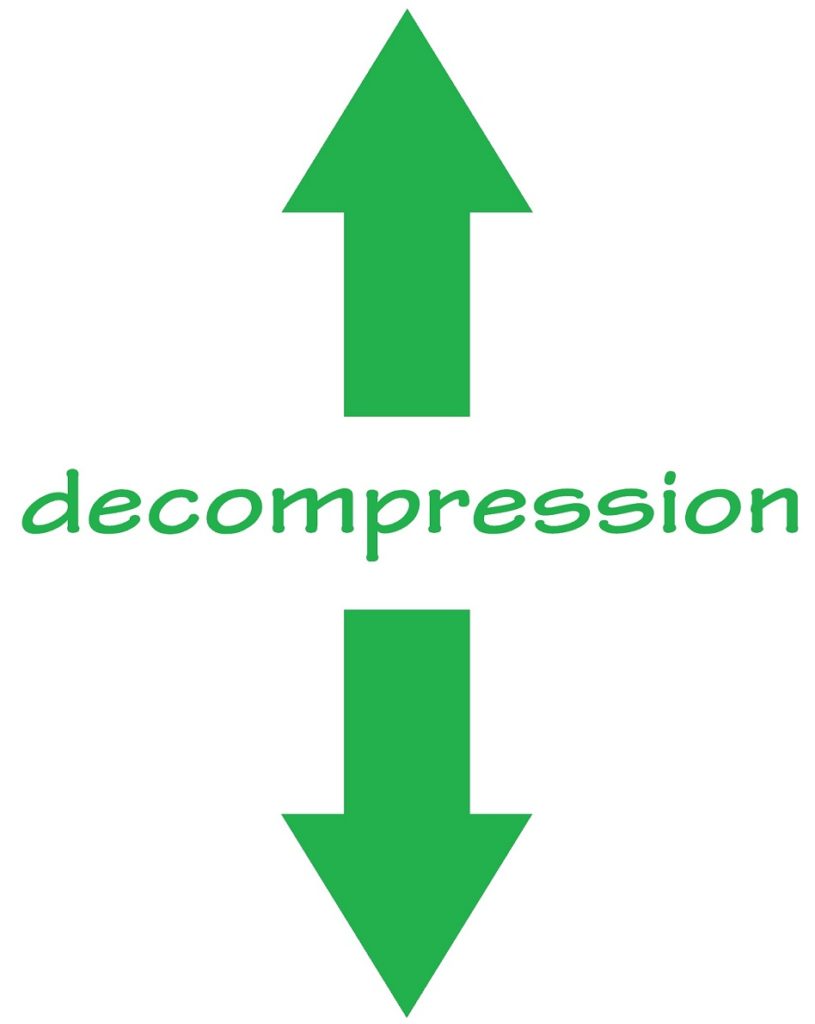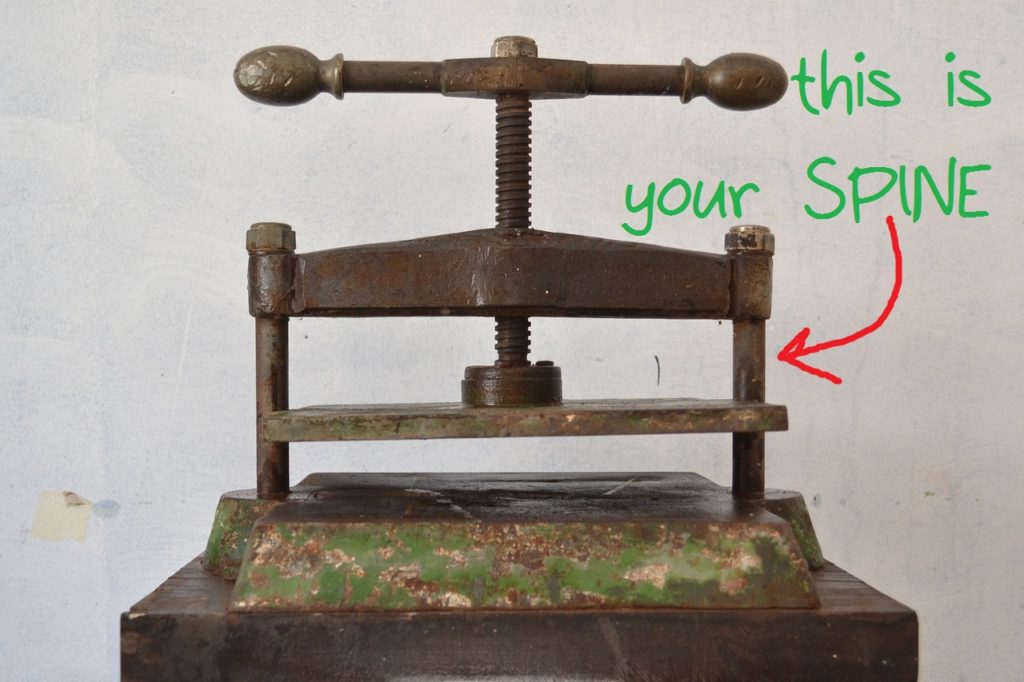Since Dr. Favero covered so much on posture this last month – and about “fighting back” at the unyielding force of gravity on our bodies – today we will put in a word on decompression for the spine and how this form of traction can take the pressure off our backs.
Spinal Discs
The spinal or intervertebral discs are between each vertebra of the spinal column. These discs are meant to help with compression and also allow a certain amount of movement in the spine. They have a thicker, fibrous outer layer and a softer, more liquid inside. Because of this they are mostly made of water, and need continual movement to keep them hydrated.
When we are very young (like during development and at birth), the body has a better blood supply to this area that provides the spinal disc what it needs in terms of water and nutrients. But this only lasts a short time, so as we age the discs rely on the tiny blood vessels at the endplates or edges of the vertebrae (block-shaped bones of the spine).
Disc aging leads to desiccation, which is a fancy term meaning the discs dry up over time. When they lose water they become thinner and lose height. This can lead to disc bulging as well as compression of the spinal nerves that come from the spinal cord and exit behind the disc, near the back portion of the spine. As the tunnel for these nerves becomes smaller, pressure on the nerves might cause symptoms like sciatica, numbness/tingling, and pain into the back or down the legs.
Resist the Unyielding Force of Gravity

Spinal disc decompression stretches our spines in the opposite direction of the gravity our backs endure all day long. In doing this, our bodies can experience a de-compression of the spinal structures, including the spinal discs.
This can be done for the neck or the back, depending on the location of your disc problem. Though traction of the spine may sound somewhat “Medieval” it is actually a gentle and comfortable therapy. See our page here or check out our post with more details on how decompression can help you.
Also see this video from Dr. Favero explaining how Spinal Disc Decompression is different from using an Inversion Table.
